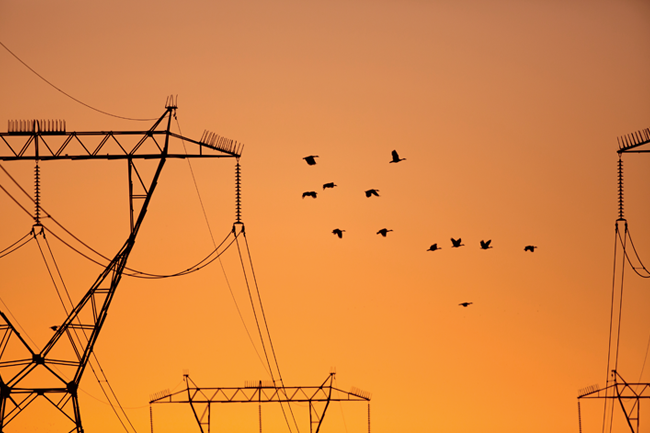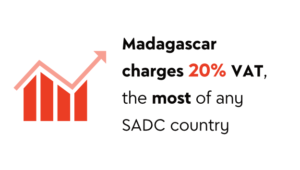In October 2013, the South African government and the DRC signed the Grand Inga Project treaty designed to harness the 40 000 MW potential of the Congo river.
At first glance, South Africa’s electricity-generation woes appear to offer a glittering opportunity to other countries in the region. There is enormous energy potential, not only in the DRC but also Mozambique and Angola.
The DRC has the world’s second strongest flowing river (after the Amazon) and a potentially enormous hydroelectric site at the Inga Falls, some 300 km downstream from the capital, Kinshasa. Full realisation of this capacity would make it the biggest hydroelectric project in the world, with nearly twice the output of China’s Three Gorges Dam scheme.
Beyond hydropower, Mozambique and Angola are starting to exploit their massive gas reserves while the former also possesses untapped hydroelectric potential – in addition to the existing Cahora Bassa dam – on the lower Zambezi river.
Pulling off a really big energy development project would deliver an enormous dividend for any of these countries. It would transform their image as a potential investment destination and benefit millions of their citizens, very few of whom enjoy the benefits of electrification. At present, only 9% of the DRC’s population has access to electricity, with Angola and Mozambique comparing at 40% and 15% respectively, according to the US Energy Information Administration.
That said, experience, policy shifts since 2013 as well as existing obstacles suggest that there are reasons to be cautious. Past attempts to align the power grids of SADC countries have delivered meagre returns. The Southern African Power Pool was established in 1995; however, it has done little more than formalise South Africa’s purchasing of electricity from Cahora Bassa and some limited emergency sales to Zimbabwe.
Part of the problem is that by global standards, South Africa has enjoyed cheap electricity. Prices in the range offered by Eskom have not made for viable project economics in other SADC countries, and there are few other customers in sight. This, however, is changing as the parastatal’s power becomes more expensive.
A really big energy development project would deliver an enormous development dividend for any of these countries
According to a 2014 Frost & Sullivan study, several other African countries now offer a lower domestic tariff than Eskom’s US16c per kilowatt Hour (kWh). According to World Bank projections the Inga project could produce power at less than half that tariff (US7c/kWh).
The 2013 treaty, recommended for ratification by a portfolio committee of the South African Parliament in November 2014, promises at least two things. The country’s national utility, Eskom, will take a 15% equity share in the next phase of the Inga development and the country will commit to purchasing 2 500 MW of the project’s planned 4 800 MW output.
There was much high-flown rhetoric around the treaty. South Africa’s President Jacob Zuma said: ‘In the spirit of ubuntu, which means “I am because we are”, and which is a core principle underpinning the work of the South African government, we will continue to stand side by side with the DRC. We will work together in seeing this great nation assume its rightful place as a fellow powerhouse of the African continent.’
The DRC’s ambassador to South Africa Ntshikiwane Mashimbye argued that ‘this is not even about electricity; this is about the industrialisation of Africa. All conflicts will never end until we have the requisite energy and industrialise the continent’.
However, the Grand Inga Project treaty came almost exactly one year after the final failed attempt to link the hydroelectrical potential of the Congo river to the rest of Southern Africa. The Western Power Corridor Company (Westcor) was inaugurated in 2003 and presented its constituent members – the national power utilities of Angola, Botswana, Namibia, the DRC and South Africa – as potential customers.Westcor planned to spend some US$5.8 billion to rehabilitate the existing Inga dams, add a third set of generators (Inga 3) and build the long anticipated Grand Inga Dam.
Not very far into the process, however, the DRC government found another potential customer. Global resources giant BHP Billiton was eager to build an aluminium smelter in the region. Cheap electricity is the key to aluminium smelting and the Grand Inga project appeared to offer what the company was looking for.
However, when it signed up with BHP Billiton, the DRC government also withdrew from Westcor, effectively ending the regional initiative. But then BHP Billiton, in turn, abandoned the project, ostensibly citing ‘unfavourable project economics’, even though observers knew that political risk was its primary concern.
As the industry publication WATTnow put it at the time, the DRC chose to ‘grab whatever money is on offer now, and who cares about relationships, regional development or a long-term future?’
There are real concerns about the capacity of various role players to drive the new programme. The DRC is not far removed from being a classic ‘failed state’, while the South African government has recently seemed obsessed with developing nuclear power. It is unlikely that Eskom has the capacity to drive even the transmission facet of the project.
The problem is that the developmental model requires both favourable circumstances and capable governance. All programmes of this sort refer back to the original exemplar, the Tennessee Valley Authority (TVA), inaugurated in the US in May 1933. The TVA powered the Manhattan Project, which produced the world’s first atomic bomb as well as a huge part of the country’s World War II industrial effort.
That programme, which turned the US into what President Franklin Roosevelt referred to as ‘the arsenal of democracy’, literally doubled the size of the economy between 1940 and 1945 and, in the process, eased the unemployment problem left by the Great Depression.
The TVA itself – which still exists as a very large general power company, with hydroelectric only a small part of its portfolio – speaks about how the country had ‘a potent secret weapon: the TVA’ when the US entered World War II.
In an eerie parallel with the recent Congo scenario, aluminium was key to this effort. At one time the Alcoa plant in Knoxville, Tennessee, was the largest single factory in the world. Fortune magazine wrote in 1946 that ‘what won the war was air-power, based on aluminium and Alcoa’.
However, it is the differences that should focus the observers’ minds. After the Japanese attack on Pearl Harbour, two huge hydroelectric dams (Cherokee and Douglas) were commissioned, built and brought on stream within 16 months – in stark contrast to the faltering Inga programme, which was inaugurated in the 1960s.
The realistic expectation would appear to be to aim for completion of the 4 800 MW Inga 3. But that would not on its own alleviate South Africa’s crisis, and in any case requires a sizeable dose of optimism. Although funders are lining up – the World Bank provided project preparation funding of US$73.1 million in 2014, which followed an African Development Bank grant of US$33.4 million the previous year – there is an enormous number of technical, governance and diplomatic hurdles to overcome.
Critics have suggested that the poor focus and institutional weakness of African governments are likely to be the biggest challenge. Power supplied by the DRC to South Africa will have to transit at least three African countries: the DRC itself, Zambia and Zimbabwe.
The DRC already has the world’s fourth longest transmission line, from the Inga site to the copper mines of Katanga. It is not in good condition, delivering only about 40% of its capacity. The World Bank estimates that rehabilitation – which requires work on the Inga power station and the construction of a second transmission line – will cost US$500 million.
Beyond these practical issues is the fact that giant dams are no longer in favour. Scepticism about their desirability has deepened since the 2001 Report of the World Commission on Dams, chaired by then South African Minister of Water Affairs Kader Asmal. The report drew heavily on the ecological social and cultural disruption caused by China’s Three Gorges Dam project. But Asmal was the only African member of the commission and other Africans may be far less inclined to draw the same conclusions.
Mega-projects work best when they are driven by a focused single-purpose organisation with heavyweight political backing – just like the TVA in the 1930s. Westcor was, possibly in embryonic form, such an organisation. But the space it used to occupy is now a vacuum and there is no sign of a viable replacement.
By David Christianson
Image: Gallo/GettyImages
















